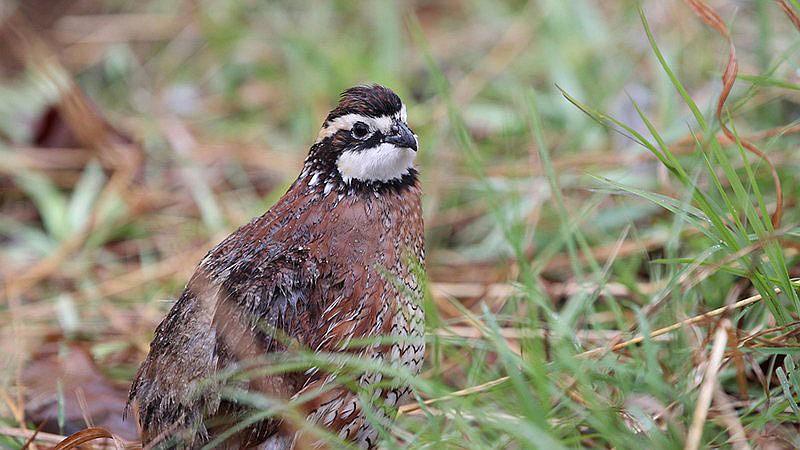Art work of a quail sitting on barbed-wire fencing above shrubby cover and native grasses, entitled Beyond the Wire at Summits Ridge, was unveiled as the image on the 2020-21 Arkansas Game and Fish Commission northern bobwhite conservation stamp in a ceremony held at Cane Hill.
Clay Connor of Hot Springs painted the art. His work has appeared in publications by Ducks Unlimited and Delta Waterfowl and in Gun Dog magazine. Game and Fish commissioners and directors attended the unveiling of the stamp. Historic Cane Hill, Inc., is a partner with Game and Fish in producing the quail conservation stamps.
“It’s incredible to be here as a new resident of Arkansas,” Connor said. “It means a lot to me because I have drawn from so many of the resources available in this state, and now, being able to participate in giving back a little bit is quite an honor. We are stewards of the land, and we’re going to be accountable for the future. Representative items such as this stamp pay it forward to the next generation.”
Establishing the quail stamp as a way to fund habitat improvements to boost the northern bobwhite population was an initiative of former Commissioner Steve Cook when he served as chairman of the commissioners panel in 2017-18. The first stamp was issued in 2018.
This year’s stamp sells for $9.50 at Game and Fish offices, nature and conservation education centers, as well as online at www.agfc.com.Marcus Asher, Game and Fish quail program coordinator, said money raised through stamp sales “is critical” to habitat improvements.
He cited a recent mulching project of 216 acres at the Fort Chaffee Training Center in Fort Smith as an example of what money from stamp sales can accomplish, and Saturday’s program included a video of the Fort Chaffee project.
Asher said the bobwhite’s survival and reproduction are mostly dependent on maintaining its habitat.
“This habitat that I talk of includes a diverse array of native vegetation types that you’ll see in Connor’s painting,” Asher said. “Quail need native grasses, they need broadleaf forbs, or what we call wildflowers, and they need a little bit of brushy, shrubby escape cover such as sumac, plums, or blackberries to reduce the effects of predation and extreme weather. They need these grasses to set their nests in and to provide actual overhead cover. Broadleaf forbs is what they use for a seed source. Those also attract a lot of insects during the first few weeks of life for a baby chick.”
Asher urges landowners who are interested in saving quail to “look beyond the wire” in Connor’s artwork and join in the efforts to provide acreage suitable for quail and other wildlife to thrive. “With more usable space available to bobwhites, it ultimately helps the livelihood of existing species and sustains them for a longer period of time,” he said.
Prints of the quail conservation stamp, including a limited number signed by Connor, are available through the Arkansas Game and Fish Foundation by calling 501-223-6468 or online at agff.org.
“I am so tickled to be part of this collaboration between Historic Cane Hill, the AGFC and the Foundation, and I’m eager to see how this grows in the future,” he said.

